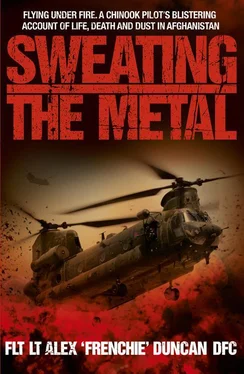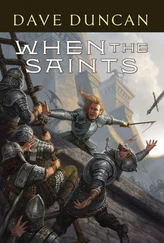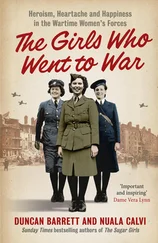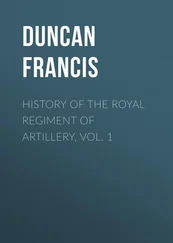Back at the tent, we pick up with Gavin and Stacey but we’re a lot more subdued. Laughter doesn’t come so readily. 18:30 passes with no shouts so make our way to evening brief. Same as this morning’s, except it’s in the evening! That complete, make our way to dinner with the medics. Halfway through meal our radio crackles alerting us of another shout. We jump up, run through the canteen, climb in our wagons and drive like lunatics to the cab. This time it’s a different ball game as it’s night. Not night at home, with reflected light from 100,000 street lights, cultural lighting, light pollution. Night is night here, and even our NVGs, some of the most advanced military technology in existence, struggle to perform. Sometimes, the best science can offer isn’t enough.
Again, we’re airborne very quickly. I get initial casualty report over air. One eight-year-old involved in IED strike. No pulse, not breathing. On the way, informed artillery is firing in vicinity of our destination, so I negotiate around it and initiate descent through the darkness into black hole that is the low-level environment. We know the ground’s there, but can’t see it. Eventually mortar illumination shells are fired from destination enabling us to finally see some ground texture 100ft below us. On run in we get another radio call. There’s a second casualty; the child’s father. Once on the ground, only one casualty is brought to us. I radio ground call sign asking about second casualty already knowing the answer. The eight-year-old doesn’t need evacuating as he passed away. We lift and rush back to Bastion. Once again an aircraft with twelve UK military personnel on board is deathly quiet on its return journey.
Once on the ground, we debrief some of the issues as a crew, I sign the aircraft which served us beautifully throughout the day and night back in, and we make our way to our beds praying for a quiet night. It happens. A relatively good night’s sleep the only saving grace after another difficult day in Helmand.
Remember what Woodsy said to me in the immediate aftermath of my return to Bastion, following the attack on Black Cat Two Two? Meeting me off the cab with JP, he’d said, ‘Don’t worry Frenchie, lightning never strikes twice.’ Yeah, right…
December 15th 2010 was never going to fill me with excitement. Offer most of us a choice of IRT or taskings, and nine times out of ten we’ll take the IRT, thanks. On IRT, there’s never a dull moment, and you feel like you’re making a difference. It’s dynamic and unpredictable – but there’s always the prospect of riding your luck and avoiding fire. Taskings – sure, they’re vital and important, but they just feel routine. And nothing ever happens on a tasking, does it?
It’s 07:00 at Bastion. I’ve slept reasonably well for here (nobody ever sleeps well in theatre) and having showered, I dress in my uniform and walk out of the tent that’s been my home for the past few weeks. I’m not overly excited about today’s planned tasking, but there’s a definite spring in my step as I think of home and our impending departure from theatre in just a couple of days’ time. The harsh sunlight is blindingly bright after the darkness of the tent, and I squint as I turn left and walk the short distance along the Rola-Trac walkway towards the crew tent. Ah yes, the crew tent. I’m showing my age in Det terms – it’s what used to be the IRT tent, but now serves as a rest area for aircrew before and after sorties. The widescreen TV is still there, along with a selection of newspapers, a console, games etc. And the coffee machine.
‘Morning Waldo,’ I say as I walk in. As per usual, Flt Lt Andrew ‘Waldo’ Waldron is early and already has the coffee machine on.
‘Morning Frenchie! It’s just brewed and ready to take out,’ he replies, as he pours and hands me a cup. ‘Cheers pal. Shall we?’
There’s nothing better than walking across to the JOC to plan the day’s formation, with a nice strong coffee. The JOC tent complex is a few steps across the dusty road that runs just outside the crew tent. We walk across to it, shortly followed by Master Aircrewman Mick ‘Fryster’ Fry and Flight Sergeant Dave Wray. The four of us are operating on task line one as formation lead for today’s tasking. Our wingmen, Flt Lt Pete Amstutz and Flt Lt Doug ‘Snoop Dog’ Gardner, both appear a short time after.
Waldo has been my co-pilot on this Det for a few weeks now. I’ve had him doing most of the flying so that he can develop his flying skills in theatre and come out on our next Det as a Captain. It’s what Nichol did with me on my first Det in 2006, and it’s the best way to gain experience. Waldo’s a very conscientious pilot, straight down the line, and he has a brilliant sense of humour. It’s a pleasure being crewed with him.
I look at the tasking, which has not changed from the previous night; some kind of plan is already in my head. The J2/J3 (Intelligence/Current Ops) briefs confirm my ideas are viable.
There are two things that make our mission different. Whereas on all previous Dets, we’ve flown all but the most vital of our sorties by night, we’re flying by day this time. Secondly, and perhaps most controversially, the threat assessment for all HLSs has been downgraded by the powers that be due to ‘lack of enemy activity’. To my mind, this lack of activity reflects the quality of the tactics that we in the Chinook Force employ, rather than a lack of capability in the enemy’s operation. The fact that we have previously flown to the most dangerous landing sites in the wee small hours of the morning to accomplish our taskings was largely down to the simple fact that there was less enemy activity then because Terry Taliban was sound asleep.
The effect of this downgrading means that sites that were previously designated as safe at night only are now allowed by day. We are told to mitigate the risk so that we don’t fly after 08:30, as the enemy might be up then. Ah yes, that’ll be because Terry Taliban uses an alarm clock that’s set for 08:00. Personally, I’d bet that he gets up when the sun comes up, but what do I know? All we do is cross the wire and face the dangers on a daily basis, whereas the people who come up with these great ideas fly desks instead of cabs and rarely leave their tents.
The changes have had one other major effect: on some sites, where previously we could only fly with an Apache escort, we can now fly as a pair with two Chinooks providing mutual support for one another. The threat isn’t deemed high enough to warrant wasting Apache hours on escorts. Some said that was fair enough, an opinion that events would soon prove wrong, warranting a U-turn of policy.
The plan for the day will see both us and our wingman taking underslung loads (USLs) to FOB Kalaang on the southern patrol base line in Nadi Ali South. Following that, there’s a troop move from Bastion to PB3 and PB2 for a single cab, which Pete and Snoop will undertake while we provide mutual support. Then we’ll fly to a grid 3km south-east of PB3, where we will drop off a USL of helium gas bottles. From there we’ll recover to Bastion, where we’ll pick up a whole lot of our colleagues and fly them to KAF, their last stop before flying home. These guys are surplus and need to be out of the way as space is limited at Bastion. This is the end of our tour and 27 ‘A’ Flight have started to replace us.
FOB Kalaang is a site that, had we been flying yesterday, we’d have visited by night only. PB2 and PB3 are both locations that we’ve previously only flown to under escort by the Apache, and the grid we are to deliver the helium bottles to is right in the middle of the Green Zone – again, not a place we’d normally fly to at midday. Still, we can only play with the hand we’re dealt; it’s time to brief the crew…
Читать дальше












